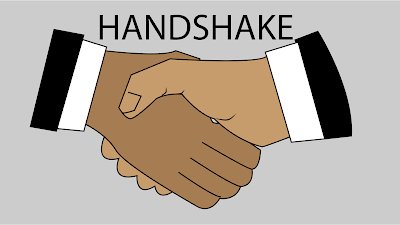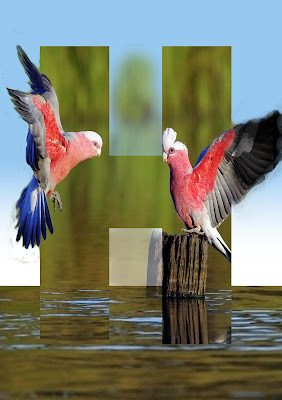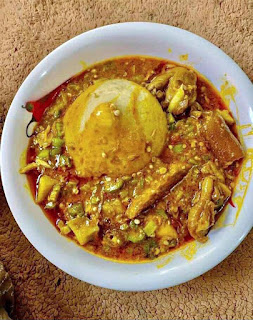She is a country with more than eight (8) tribes which include :- Akan
- Mole- Dagbani
- Ewe
- Ga-Dangme
- Gurma
- Guan
- Grusi
- Mande
- and others.
As a country full of different cultures with diverse cultural beliefs in terms of morals, ethics and way of life, there are very strong foundations that can be said as running through almost all these tribes. One of these moral standards is respect and honour for people whether old or young because everyone is useful to one another if not today it can be tomorrow.
Overview of Ghana's cultureCulture as it is widely known is the way of life of a group of people and in Ghana there are different groups or tribes or even ethnic groups. Taking it on a hierarchical level, the country has sixteen regions which are: Ashanti, Brong Ahafo, Central, Eastern, Greater Accra, Northern, Upper East, Upper West, Volta, Western, Savannah, Bono East, Oti, Ahafo, Western North, North East. All these regions have their respective beliefs and cultural practices as well as the festivals celebrated in the regions.
In fact, most of Ghana's culture has a central belief in the African traditions and its practices but Christianity has reached most people since it is God's plan for man and gradually most outmoded cultural practices are being discarded to embrace ways of live that value everyone equally and respect their entitlements.
Greeting is a very significant elements of all the tribes or regions in Ghana and one way of greeting is through handshake. It is a cultural practice that is very familiar with almost all regions in Ghana.
Below is a table of the sixteen regions in Ghana with the capitals and some of the festivals celebrated in some of the regions. During events such as festivals, handshakes are everywhere since it is a very common and usual way people tend to greet.
|
Region
|
Capital
|
Festival
|
|
Ashanti
|
Kumasi
|
Akwasidae, Mmoaninko
|
|
Brong Ahafo
|
Sunyani
|
Apoo, Fofie Yam
|
|
Central
|
Cape Coast
|
Aboakyere, Ohum, Bakatue
|
|
Eastern
|
Koforidua
|
Odwira
|
|
Greater Accra
|
Accra
|
Asafotufiam, Homowo
|
|
Northern
|
Tamale
|
Damba
|
|
Upper East
|
Bolgatanga
|
Fao, Gologo, Damba
|
|
Upper West
|
Wa
|
Damba
|
|
Volta
|
Ho
|
Hogbetsotso, Gari, Tedudu
|
|
Western
|
Sekondi-Takoradi
|
Kobine, Kundum
|
|
Savannah
|
Damongo
|
Damba
|
|
Bono East
|
Techiman
|
|
|
Oti
|
Dambai
|
Gyogyibele
|
|
Ahafo
|
Goaso
|
Adikanfo
|
|
Western North
|
Sefwi Wiawso
|
|
|
North East
|
Nalerigu
|
Damba
|
Importance of greetings and cultural practices
!) Fosters unity
When people both the elderly and young greet one another, there is that oneness created among individuals and the community at large. Deeply rooted in the Ghanaian culture is that when a young person meets his peer or an elderly, he or she is expected by tradition to greet as a form of respect. When this is not done, it can be assumed that the individual hasn't been brought up well. Normally, the people give an instance where upon meeting a person and one passes by without greeting and just a few steps away some misfortune happens, the other person might be reluctant to help because of the assumption that the individual who did not greet is disrespectful. It is just one of the reasons why greeting is very important in the Ghanaian culture among both the young and the old.
2) Shows respect and good relations
Right from the home and even school, both parents and teachers teach young people greeting, how to greet and relate well with their peers and the elderly. The essence of greeting and other cultural practices like good eating habits, good communication and more, extend beyond just the family to the entire community and the country at large. For this reason, this habit is inculcated in children from infancy so that as they grow and mature, these habits will be with them in order that they turn out good and responsible people in society.
3) Encourage peaceful co-existence
No group of people in Ghana ever want to be in conflict because conflict brings only harm and destruction to properties and lives and no benefit to anyone. As a form of enforcing a harmonious living environment, greeting is very instrumental. In case of a disagreement between any people and the case has to be settled in a traditoinal palace, after trial of the case and pronouncement of appropriate conclusion or judgement, one important act that is used to demonstrate that the parties have reconciled is that they are ordered to shake hands. Handshake therefore extends just beyond the act of two people holding each others hand to establishing a harmonious environment to live in.
Proper execution of handshake
In shaking hands, there are no strict rules but one must be guided in how he does it. A young person shaking an older man would have to shake gently but hold the hands firmly or boldly to show confidence but holding the hand too firm or tightly can show disrespect. When young people especially peers shake one another, it is done with no particular restriction and even at times they do hug at times. The way in which it is than varies due to the relationship one has with another person and so the basic essence is greeting, showing honour and respect to one another.
Non-verbal cues associated with handshakes
When handshake is done, some non verbal reactions or actions are demonstrated as well and they include the smile or facial orientation of both parties. At times people can hit the hands so hard before shaking and it shows maybe how long they have met and happy to meet once again or even as a way of making themselves laugh or share some moment of excitement.
Handshake during COVID-19 times
COVID-19 didn't spare handshake at all because during the very intense periods of the outbreak, there was a public directive to avoid handshake because it could cause transmissions of the virus and many were actually distressed with the phenomenon. Due to how vital it is to the society and the people, there definitely needed to be a way to manage it and so people resorted to greet using the lower arm to touch the other person's lower arm or do big-up or by the use of the fist. From interactions with many during those times, it was challenging as friends and loved ones could not really bond since distance needed to be kept and the directive also adhered to but after the lifting off of the directive as the situation was put under control, the Ghanaian society was restored to continue the good cultural practices that promote peaceful living and existence of which handshake was very paramount.
Handshake indeed is not just an act but a form of showing respect and as some people even shake hands, they bow to demonstrate their humility and respect for the other person.











Comments
Post a Comment
Share your views on this insightful content